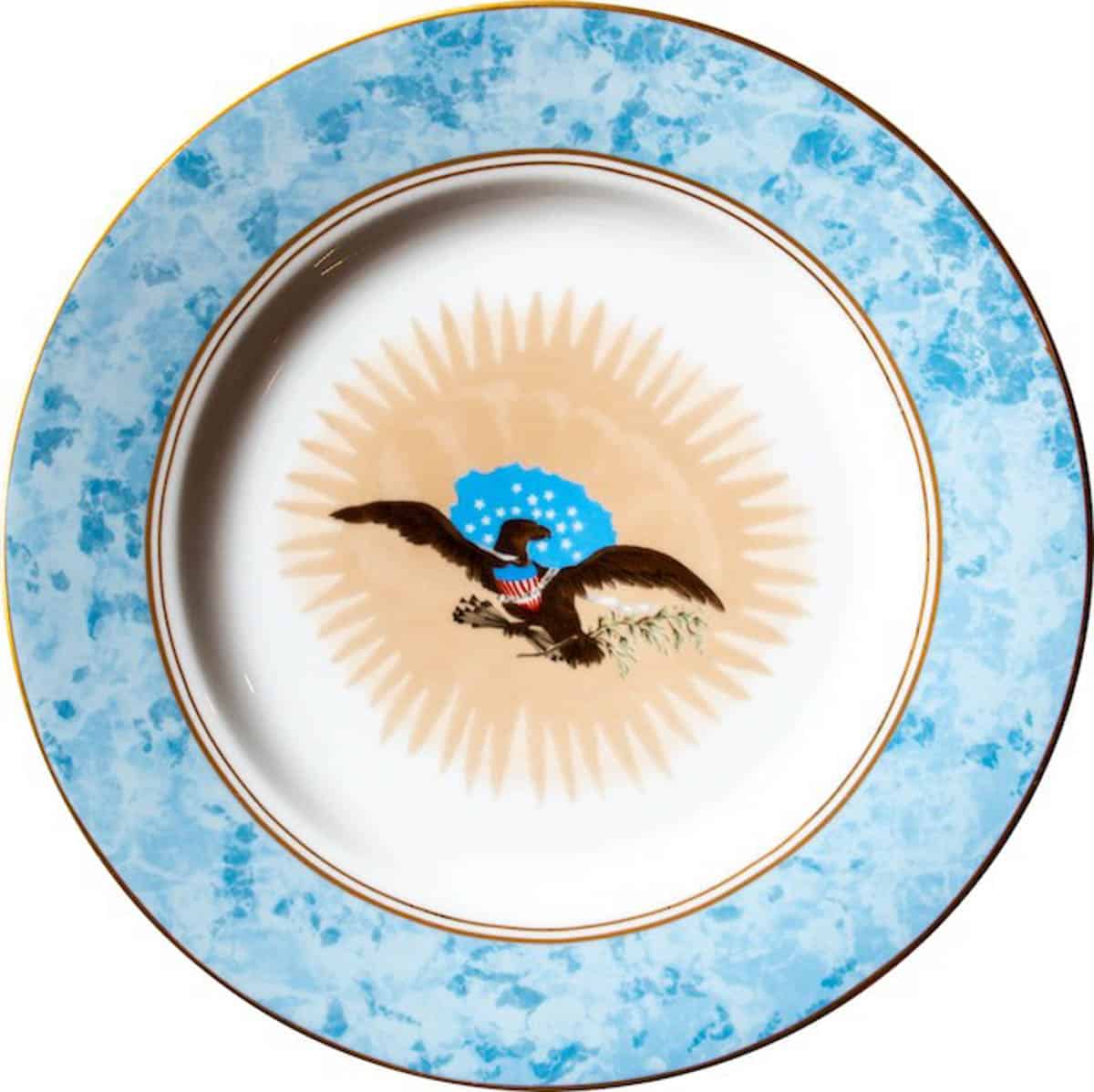
No one knows more about quality china than the folks that run The Greenbrier, a luxury resort in White Sulphur Springs, West Virginia. The resort started in 1778 as a healing spa after a pioneer woman discovered a mineral spring on the property.
Since then, it has developed an international reputation for its dining, decor and… dishes. Indeed, one can almost trace its history by its china patterns.
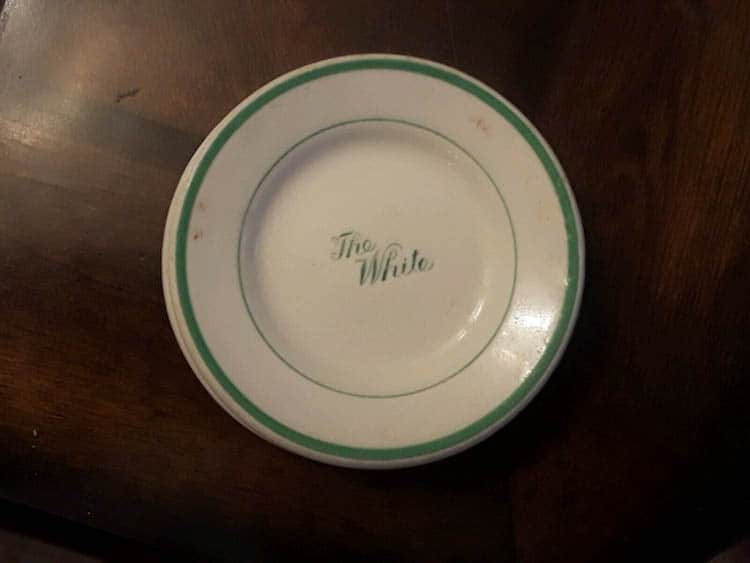
History of Greenbrier China
From its earliest years when the fledgling property was known as “Old White,” they used a simple china pattern in the restaurant. It was a white plate with green around the edge and “The White” written in green in the center. Simple enough.
Another simple but elegant style references Old White with a drawing of the gazebo-covered spring, the trademark Greenbrier still uses today. They set tables in the main dining room and for special occasions with this china. By the way, the gazebo and spring are still there too.
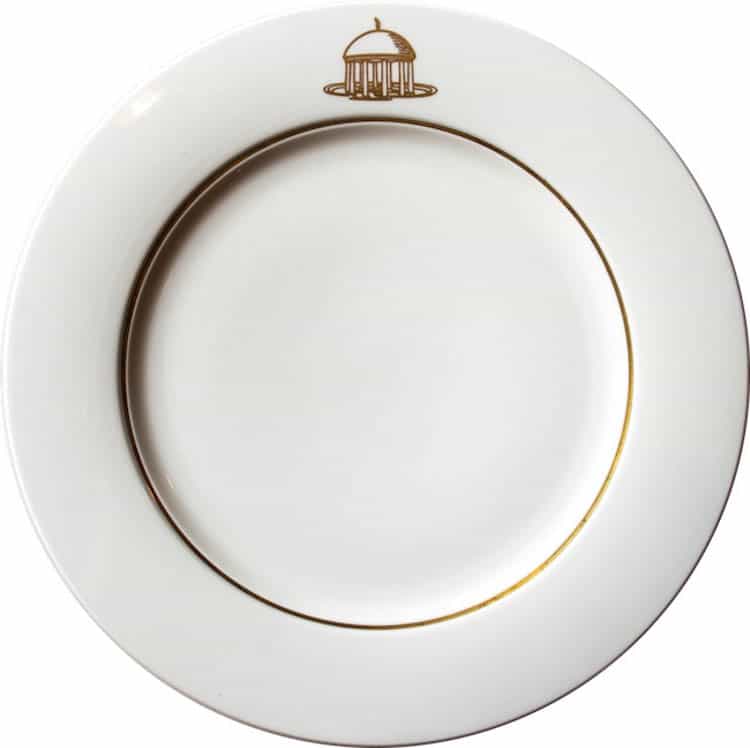
Greenbrier China is Presidential
In 1910, the Chesapeake and Ohio Railroad bought the hotel and changed the name to The Greenbrier after the county in WV.
By this time, the resort had become a favorite spot of government officials since it was only a six-hour train ride from Washington, D.C. As of today, 27 American presidents have stayed there.
The Van Buren China reflects the hotel’s American roots with the country’s national symbol, the bald eagle, in the center. It’s a recreation of the White House china of President Martin Van Buren (the eighth U.S. president).
They use it only in the separate Colonnade Estate Home on the property when foreign dignitaries, aristocrats and presidents visit.
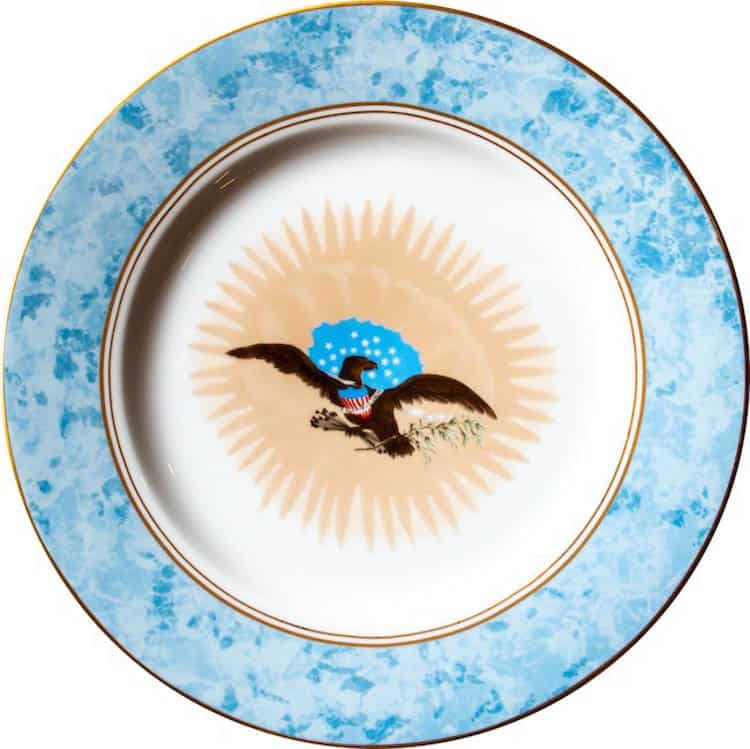
Greenbrier China Becomes More Elaborate
When the current hotel opened in 1913, the china pattern became more elaborate, as did the resort itself, adding a new mineral bath with water from the original spring and golf course.
A vine of leaves and flowers encircled the outer rim of the dish while an insignia of “HG” sat squarely in the center. This pattern graced tables all the way up to World War II. It is now a prized collectors’ item, as is most of china.
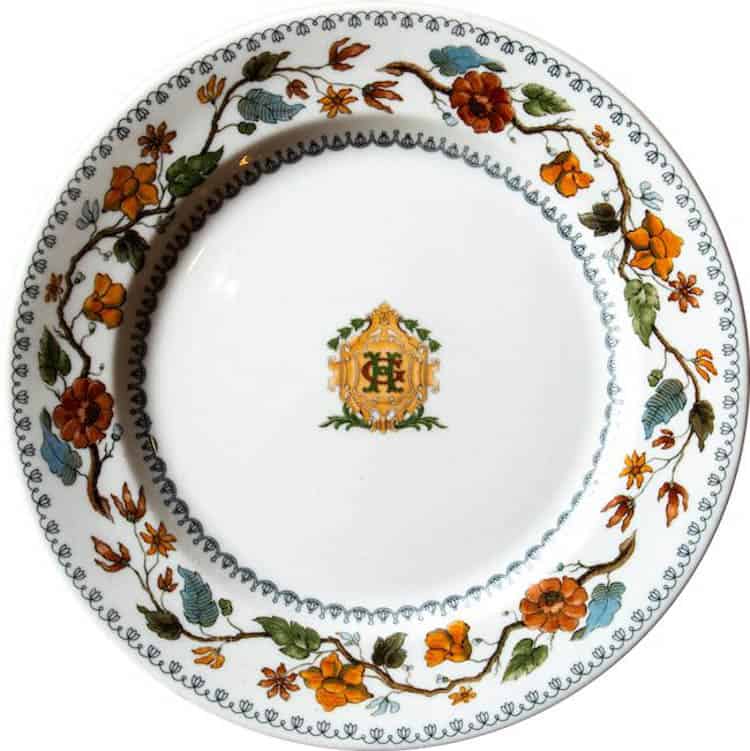
Army Hospital
When World War II broke out, the U.S. Army bought The Greenbrier. They used it as a hospital—Ashford General Hospital—for American soldiers. “Did they used hotel china?” I asked Robert Conte, Greenbrier historian since 1978.
“I presume the army used regular old army china, whatever that may be,” Conte said. “In fact, it seemed that service was cafeteria style, and I’ve often thought the soldiers ate on cafeteria trays.
When the army took over in 1942, all of that ‘leaf and branch’ china went away. Some of it was auctioned off, much of it was given away to local churches, and some of it just disappeared in the frantic rush to get the hospital up and running.”
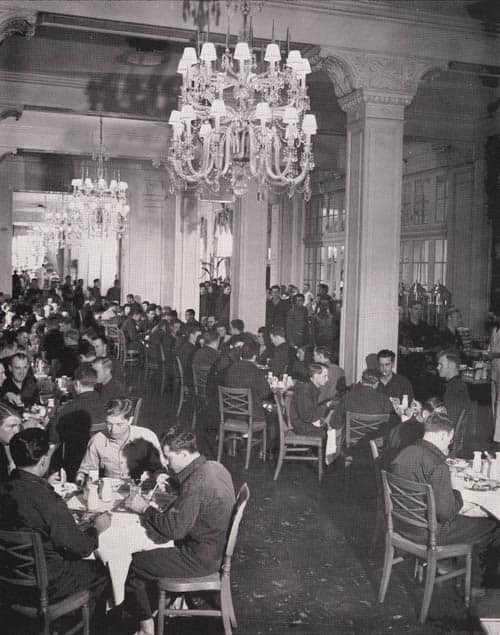
Dorothy Draper Greenbrier China
When the war ended, the army sold the property back to the C&O Railroad, and it reverted to hosting guests as The Greenbrier Resort. This is when the railroad commissioned design maven Dorothy Draper to completely re-design the hotel’s interior. It re-opened in 1948 to much ado in society circles.
Draper’s bold designs, brilliant colors and penchant for West Virginia’s state flower The Rhododendron splashed all over the hotel, including onto the china.
Conte recalls a long-held story about the new Draper dinner plate. After looking at the flower in the center, a staff member asked the maitre d’ if the plate should be placed on the table in the main dining room in any certain way. His answer was, “The three little leaves shall always face the diner.” And so they do to this day.
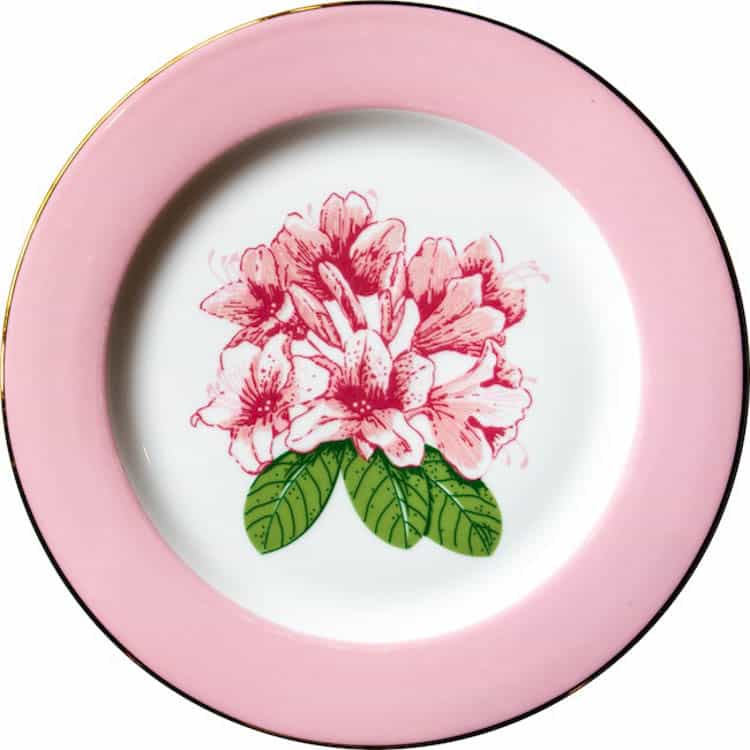
The Bunker
The Greenbrier answered the nation’s call again in 1958 when the resort secretly began construction of an underground fallout shelter. It was to be used for house members of Congress in case of a nuclear attack during the Cold War.
This mini-city behind concrete walls in the hotel’s underbelly lasted undetected and unused for 30 years until a Washington Post reporter broke the story.
Now, the resort offers tours of this amazing attraction in its original state, along with golf, tennis, swimming, bowling, a casino and much more.
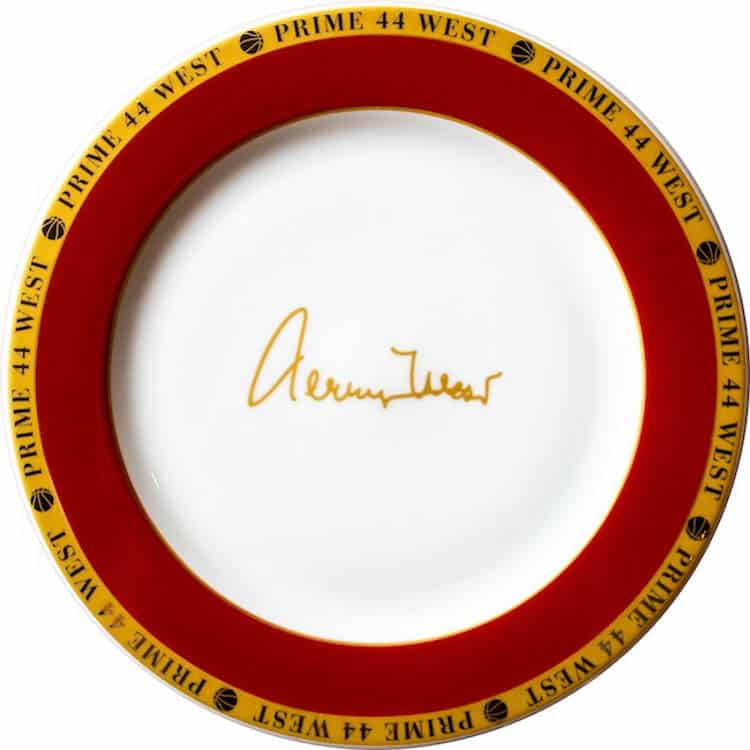
Restaurants with Greenbrier China
The Greenbrier’s cache of china is as varied as its 20 restaurants and bars. Whether it’s a picnic by poolside or a sophisticated snack accompanying signature cocktails and premium spirits, Carleton Varney—heir to the Draper Design empire for the last six decades—has designed a distinctive china pattern for each of them. Each pattern compliments the color and personality of the room.
“Color is always uppermost in his mind,” said Conte.
This bright red design is at the steakhouse Prime 44 West, named for West Virginia native and NBA legend Jerry West whose signature it bears.
Authentic Italian fare rests on this plate in The Forum, the resort’s replica of a restaurant in Rome. One can imagine the laurel leaves around the rim of the plate also encircling the head of Caesar, the Roman Emperor.
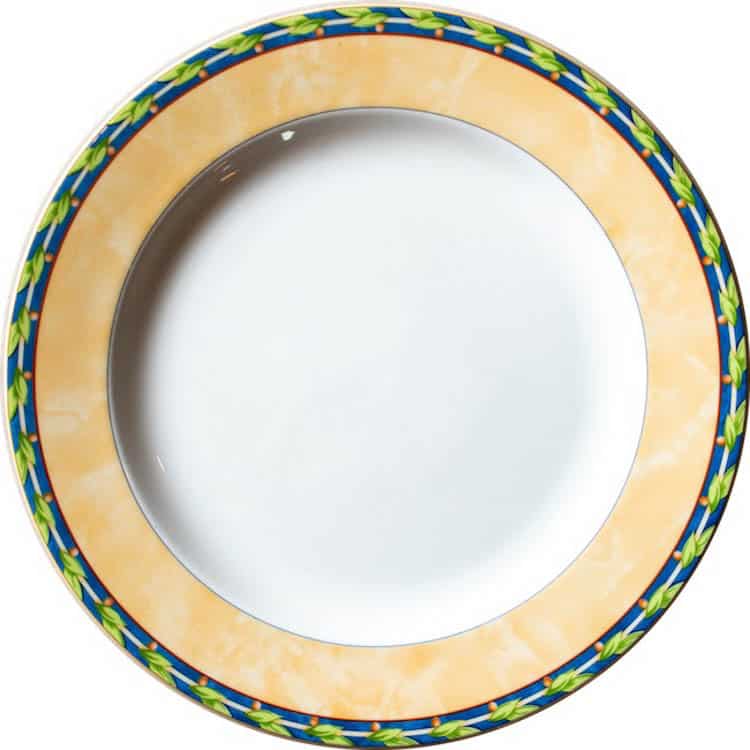
For very special events, the Crystal Room is an elegant private dining room with a long table set under spectacular crystal chandeliers.
Gold china, gold silverware and gold stemware are the hallmarks of Greenbrier’s Gold Service and White Glove dinners. This pattern on the charger plate dates back to 1956. Again, it’s the likeness of the spring’s gazebo.
This entree plate used in the Gold Service is dripping with sophistication. The tuxedo black adds drama and elegance when rimed with shimmering gold.
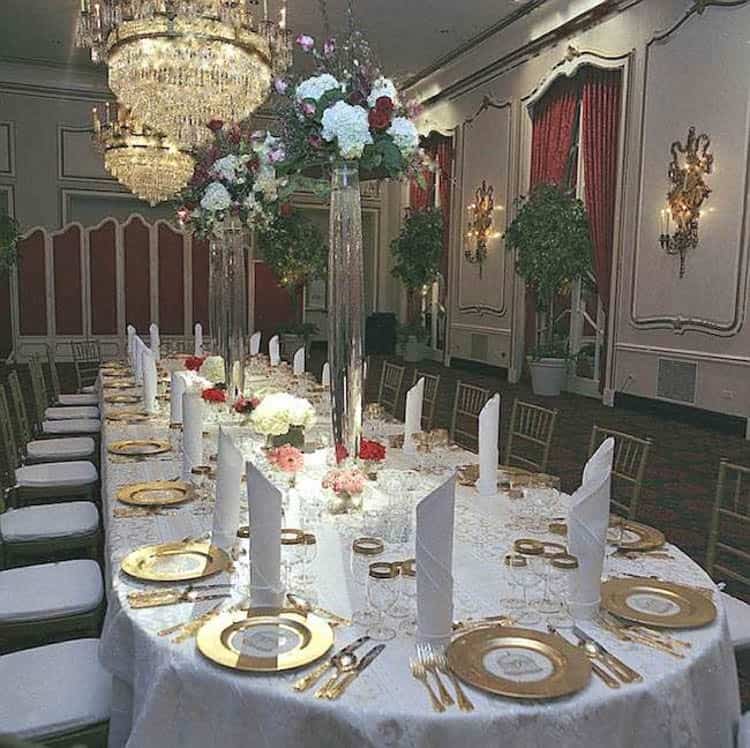
Why does china matter?
“China is like the canvas to an artist,” said Executive Chef Bryan Skelding.
“It creates a backdrop and allows for another feel of a dish. Imagine what a dish plated exactly the same would look like on many different styles of plates. It adds to the whole dining experience and the whole Greenbrier experience,” he said.
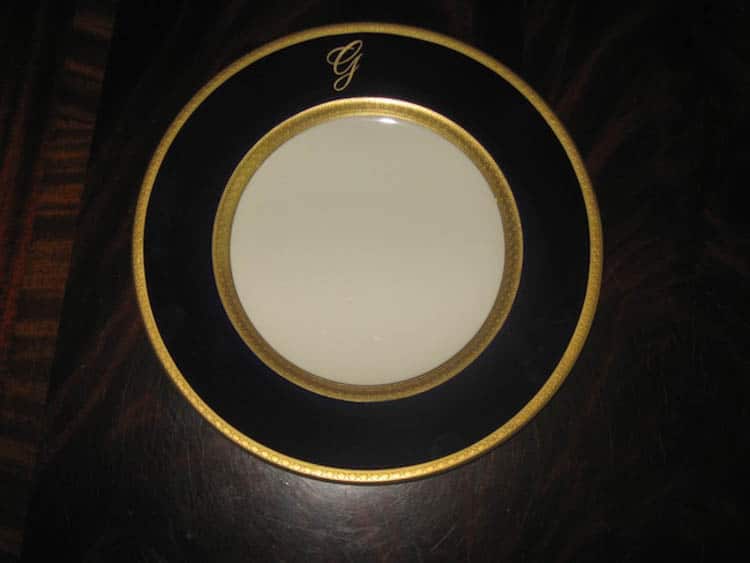
Most of the china at the resort comes from the local Homer Laughlin China Company in Newell, WV. Founded in 1871, the company prides itself on the quality of the china. It’s heavy and long-lasting, so it’s perfect for a hotel with multiple eating places.
Vintage Greenbrier china has become so popular, you can find it traded on online sites like eBay and Etsy. One plate might cost you $150. In addition, the Greenbrier shop at the resort sells the current patterns. Most requested are the Draper Rhododendron and Prime 44.
This version of the Dorothy Draper china graces the home of a private collector.
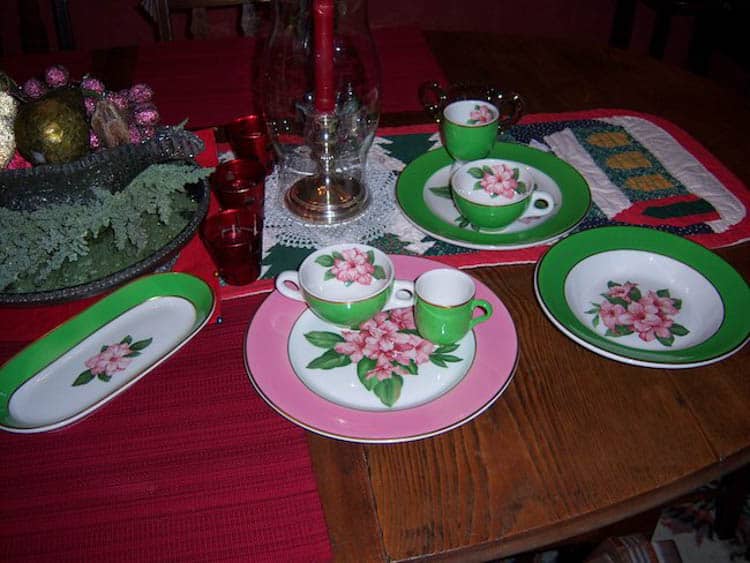
Author Bio: Claudia Carbone is an award-winning travel writer based in Denver. Read about other places she’s visited in Sleepin’ Around.
- Visiting West Point: How to Navigate Your Way to and Around the Iconic Military Academy - February 4, 2023
- Sleeping on The Wharfside, Floating Bed and Breakfast Docked on San Juan Island - December 18, 2022
- Urban Meets Mountain with Hyatt Regency Salt Lake City in Utah - December 15, 2022
